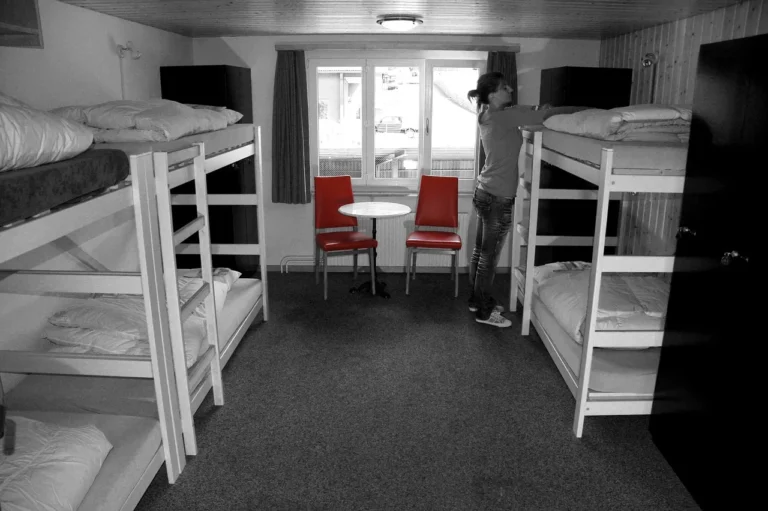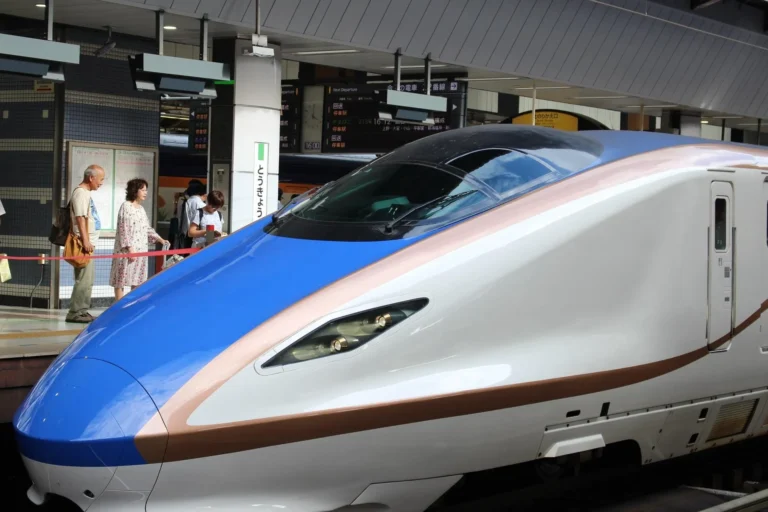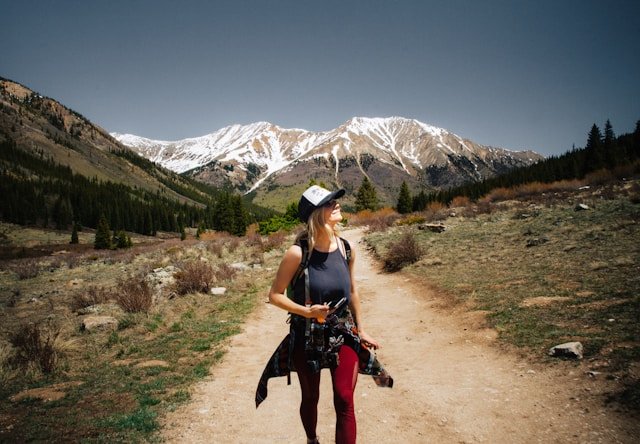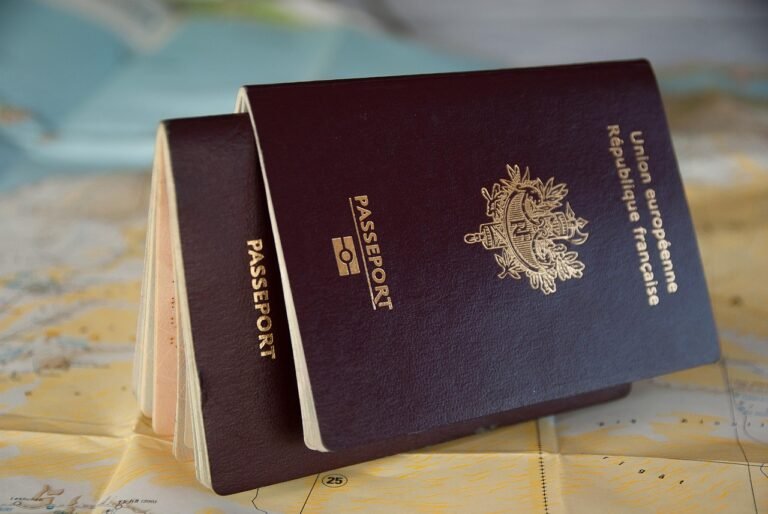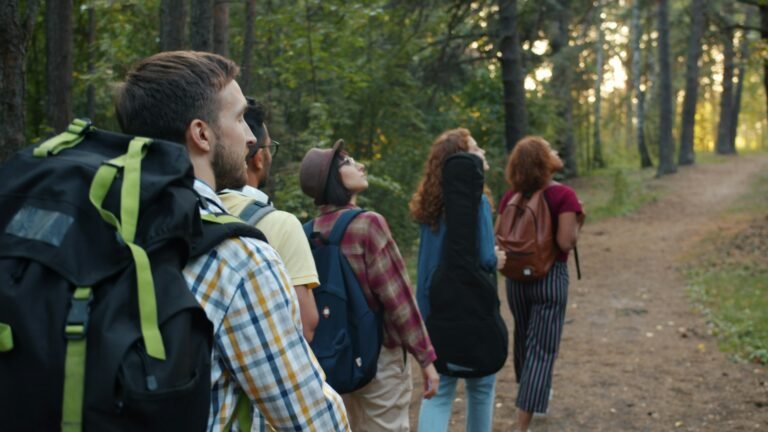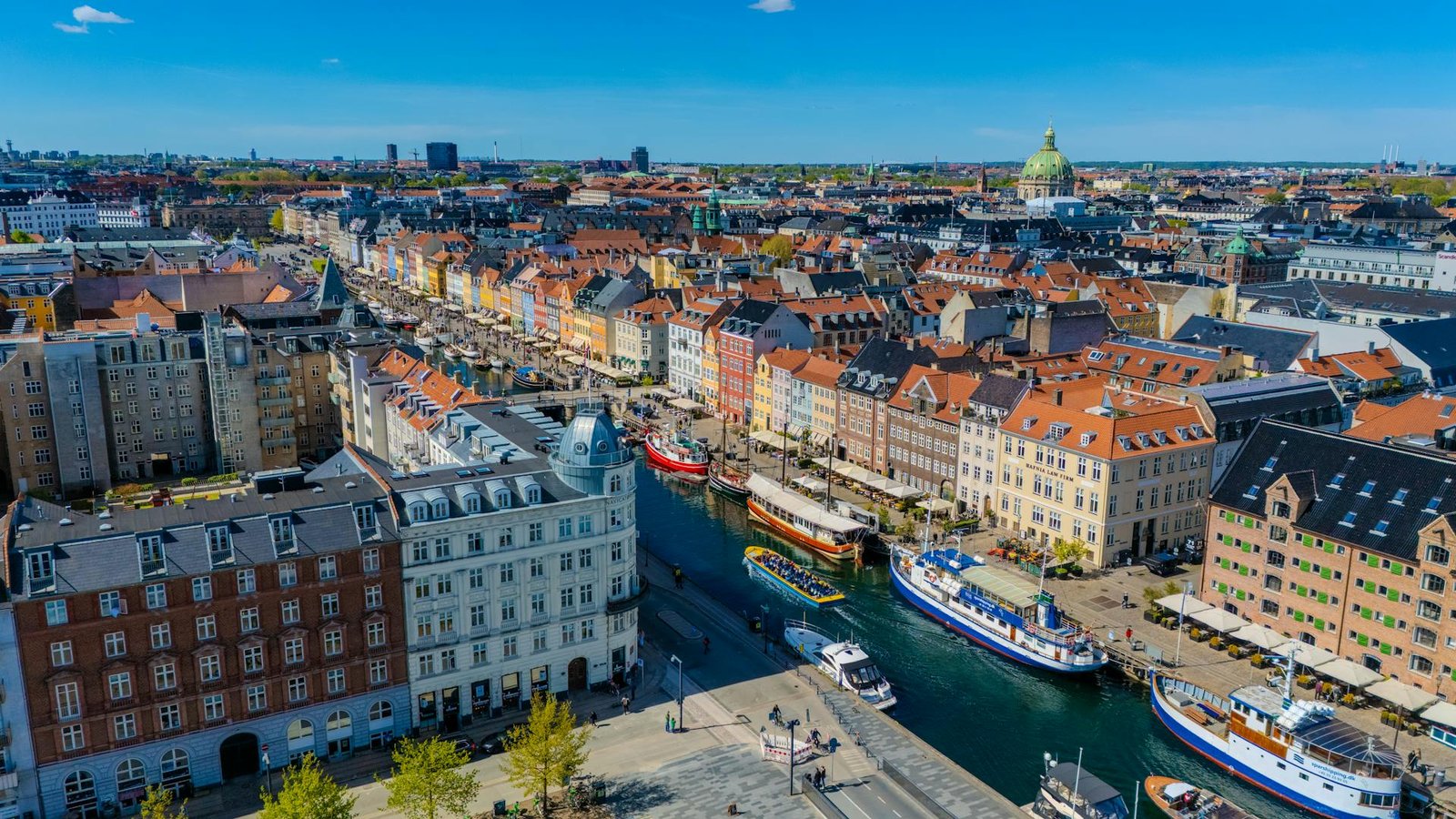
Look, I’m going to be honest with you. When I first started planning my Italy trip three years ago, I had the same Pinterest-perfect vision everyone does: me, gracefully sipping wine in Tuscany, tossing coins into the Trevi Fountain, and somehow looking effortlessly chic while navigating Rome’s cobblestones in heels.
Reality check: I spent my first day in Rome with blisters the size of olives and got completely lost trying to find a decent espresso that didn’t cost €8 near the Pantheon. But here’s the thing—that chaos led me to discover some of Italy’s most incredible hidden corners that no travel guide ever mentions.
After four trips to the boot-shaped peninsula and countless conversations with locals (shoutout to Marco, the gelato shop owner in Bergamo who insisted I try his pistachio creation), I’ve figured out which Italian destinations are worth your time, money, and inevitable Instagram stories.
The Northern Gems That’ll Make You Forget About Venice
The Dolomites: Nature’s Cathedral

Forget everything you think you know about Italian landscapes. The Dolomites aren’t just mountains—they’re these impossibly dramatic limestone towers that look like someone decided to build cathedrals out of rock and then painted them pink at sunset.
I remember standing at Alpe di Siusi, completely unprepared for how the light would transform these peaks into something that belonged in a fantasy novel. The hiking trails here range from leisurely walks (perfect for wine-heavy lunch recovery) to challenging climbs that’ll test every muscle you forgot you had.
Best base: Ortisei or Selva di Val Gardena Don’t miss: Cable car rides at sunrise, especially the Seceda ridgeline
Lake Como: Yes, It’s Overhyped, But Also Worth It
Everyone knows about Lake Como now—thank you, George Clooney—but most people stick to Bellagio and miss the real magic. Skip the crowds and head to Varenna instead. This tiny lakeside town has all the charm with half the tourists and double the authentic pasta.
Insert image of colorful houses along Lake Como shoreline
I spent three days here last summer, and my biggest decision each day was whether to have my morning cappuccino overlooking the lake or tucked into the tiny piazza. Pro tip: the hiking trail from Varenna to Castello di Vezio offers killer views and burns off enough calories to justify that second helping of risotto.
Milan: More Than Just Fashion Week
Milan gets dismissed as purely business and fashion, which is ridiculous. Yes, it’s expensive, and yes, the Duomo is crawling with tourists taking the same angles. But Milan’s aperitivo culture is unmatched—nowhere else have I found bars that serve cocktails with spreads so elaborate they count as dinner.
The Brera District feels like Paris had an Italian cousin who’s slightly cooler and definitely dresses better. Plus, if you’re into art, La Scala and the Pinacoteca di Brera will make you question why you ever thought you needed to go to Paris for culture.
Central Italy: Where Instagram Dreams Become Reality
Tuscany: But Not Where You Think
Everyone heads straight to Florence and Siena, which are beautiful but packed tighter than a Roman metro during rush hour. Instead, I’m going to tell you about three places that’ll give you those rolling hill vibes without the tour bus exhaust.
San Gimignano: Medieval Manhattan

This hilltop town looks like someone built Manhattan in the 13th century and then forgot to update it. The medieval towers create this incredible skyline, and the narrow streets are perfect for getting pleasantly lost while hunting for the perfect Vernaccia wine.
I made the mistake of wearing new leather sandals here—those ancient cobblestones are not forgiving. But the views from the Torre Grossa made every uncomfortable step worth it.
Montepulciano: Wine Country Done Right
If Tuscany were a person, Montepulciano would be its confident, wine-loving cousin who knows exactly how good they look but isn’t obnoxious about it. The Vino Nobile di Montepulciano here is extraordinary, and the town sits on this hill like it’s posing for a Renaissance painting.
The underground wine caves beneath the town are incredibly cool—both temperature-wise and aesthetically. Perfect for escaping the summer heat while learning why Italian wine makes everything else taste like grape juice.
Val d’Orcia: The Desktop Wallpaper Come to Life
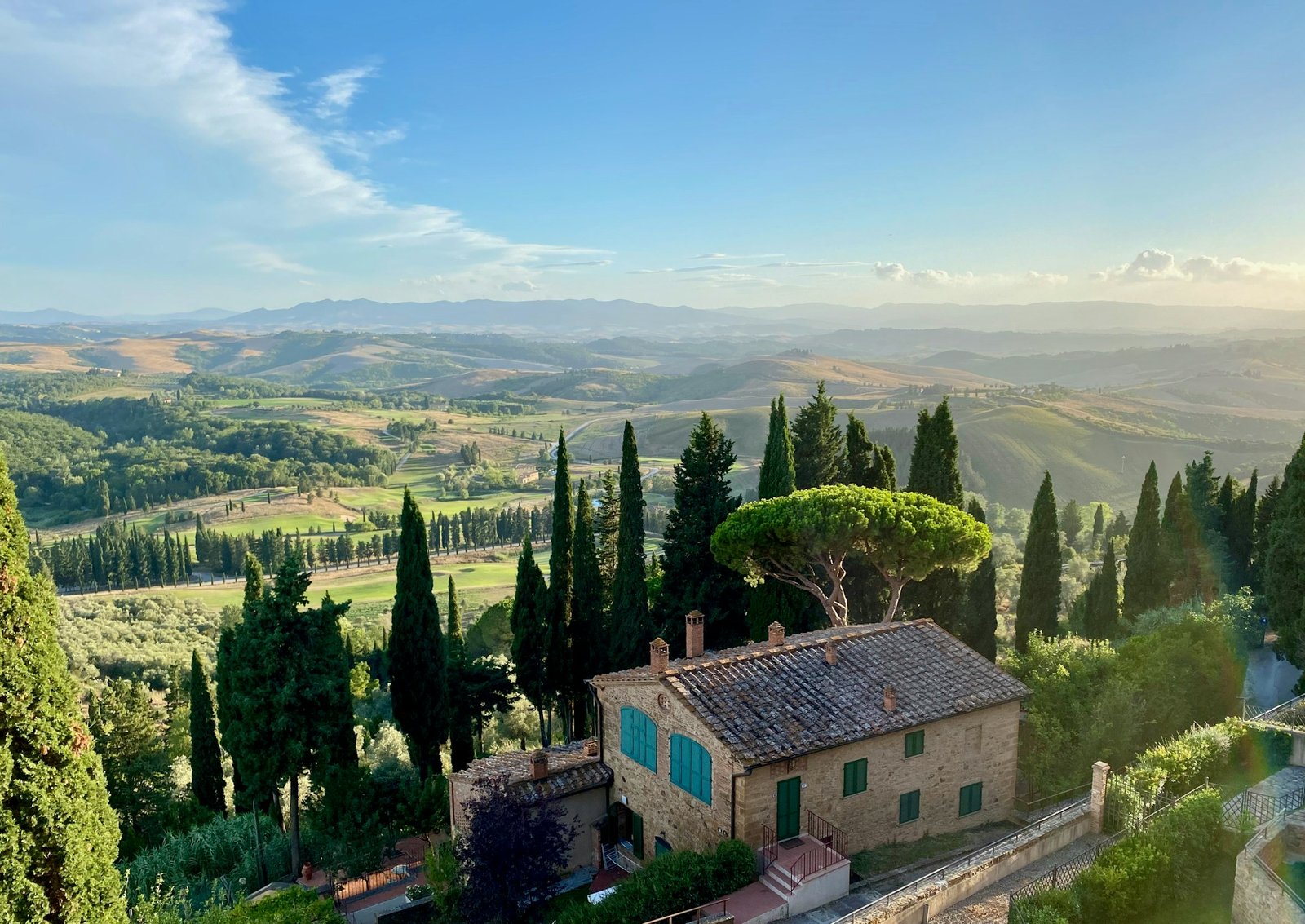
This UNESCO World Heritage site is basically what everyone pictures when they think “Tuscany.” Rolling hills, cypress trees arranged like nature’s decorative accents, and farmhouses that look like they’re waiting for their Architectural Digest photoshoot.
I drove through here on a foggy morning, and it was like moving through a dream sequence. Every turn revealed another impossibly perfect landscape that made me understand why people retire here and never leave.
Rome: Eternal City, Eternal Crowds
Rome is mandatory, let’s be real. But instead of fighting the masses at the Colosseum at noon (seriously, why do people do this to themselves?), visit early morning or late afternoon. The Roman Forum at sunrise is magical—you can actually hear your own thoughts.
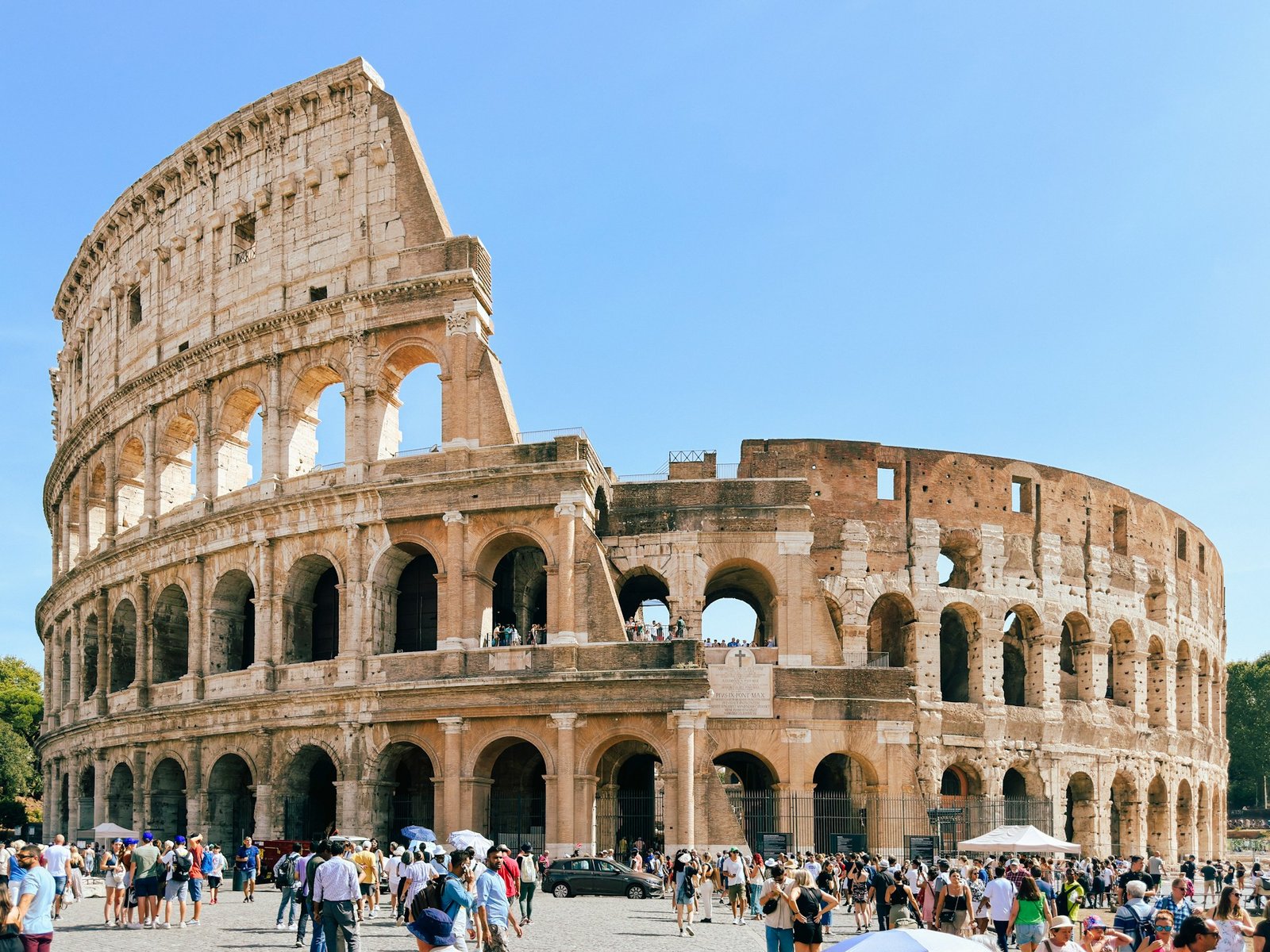
Skip the Vatican Museums on Fridays unless you enjoy feeling like cattle. Wednesday mornings are surprisingly peaceful, and you’ll actually be able to appreciate Michelangelo’s ceiling without someone’s selfie stick in your peripheral vision.
Hidden Rome gem: Trastevere at night. Cross the Tiber, find a tiny osteria, and prepare for the best cacio e pepe of your life while locals debate football with the passion of United Nations diplomats.
Southern Italy: Where Things Get Real
Naples: Chaotic, Dirty, Absolutely Essential
Naples scared me at first, I’ll admit it. The traffic is apocalyptic, the streets can be gritty, and everyone seems to be having three conversations at once while gesturing like they’re conducting invisible orchestras.
But Naples is where pizza was born, where coffee culture reaches its zenith, and where Italian passion isn’t performed for tourists—it’s just daily life. The Naples National Archaeological Museum houses treasures from Pompeii that’ll make you rethink everything you know about ancient Rome.
Plus, nowhere else will you find pizza that makes every other pizza taste like cardboard with ketchup. The wood-fired ovens here reach temperatures that would melt your home oven, creating those perfect charred bubbles on the crust.
Amalfi Coast: Worth the Hype (And the Motion Sickness)
Yes, it’s touristy. Yes, it’s expensive. Yes, the coastal road will test every prayer you’ve ever learned. But the Amalfi Coast is genuinely spectacular, especially if you can visit in shoulder seasons.
Positano looks like a Mediterranean fever dream—houses painted in sherbet colors cascading down cliffs toward water so blue it looks artificial. I spent a afternoon just sitting at a café, drinking overpriced limoncello, and wondering how places like this actually exist.
Money-saving tip: Stay in Salerno and day-trip along the coast. You’ll get the views without the €400-per-night hotel bills.
Sicily: Italy’s Wild, Complicated Sister
Sicily deserves its own trip, honestly. This isn’t mainland Italy—it’s something older, more complex, with layers of Greek, Arab, and Norman influence creating a culture that’s uniquely Sicilian.
Mount Etna is actively volcanic, which sounds terrifying but creates the most incredible soil for wine production. The contrast between the black volcanic rock and the brilliant green vineyards is striking. Plus, where else can you ski and swim in the Mediterranean on the same day?
Palermo’s street food scene is legendary—think Arab-influenced flavors meets Italian technique. The markets are sensory overload in the best possible way.
The Underrated Regions You’re Probably Ignoring
Emilia-Romagna: Food Heaven
This region doesn’t get the Instagram love, but it’s where Italian food culture reaches its peak. Bologna is the unofficial food capital of Italy, home to authentic Bolognese sauce (which, plot twist, isn’t served with spaghetti here), incredible mortadella, and pasta-making traditions that date back centuries.
I took a cooking class here and learned that everything I thought I knew about Italian food was basically wrong. Emilia-Romagna is also home to Parmigiano-Reggiano production—touring one of these facilities will make you understand why real Parmesan costs what it does.
Le Marche: Tuscany Without the Crowds
Le Marche (The Marches) delivers everything you want from Central Italy—medieval hilltop towns, incredible wine, stunning countryside—without the tour buses. The Sibillini Mountains offer hiking that rivals anywhere in Europe, and the coastal towns along the Adriatic are perfect for that seaside Italian experience.
I stumbled upon a festival in Ascoli Piceno where the entire town was celebrating their local olive ascolane (stuffed olives), and I realized this is what travel is really about—those unplanned moments when you become part of something authentic.
Practical Planning: What I Wish I’d Known
Transportation Reality Check
Italy’s train system is excellent for major routes (Rome-Florence-Milan corridor), but once you venture into smaller towns, you’ll want a car. I learned this the hard way trying to reach hilltop towns in Tuscany via public transport—it’s possible but requires the patience of a saint and the scheduling skills of a logistics coordinator.
Car rental tip: Book through Auto Europe or Europcar for better coverage and English-speaking support.
Accommodation Strategy
| Region | Best Base | Why | Average Cost/Night |
|---|---|---|---|
| Northern Italy | Verona | Central to lakes, Dolomites, Venice | €80-120 |
| Tuscany | Siena or Montepulciano | Authentic feel, day trip flexibility | €90-150 |
| Rome/Central | Rome or Orvieto | Transport hub, authentic options | €70-200 |
| South | Naples or Salerno | Coast access, real Italian culture | €50-100 |
Insert image of typical Italian hotel terrace with breakfast setup
Money Matters
Italy isn’t cheap, but it doesn’t have to break your budget either. Here’s what actually costs money versus what doesn’t:
Expensive: Tourist area restaurants, hotels in famous cities, anything near major monuments Reasonable: Regional wine, local markets, transportation, smaller town accommodations Free/Cheap: Hiking, beaches, church visits, people-watching with coffee
Seasonal Considerations: When to Go (And When to Stay Home)
Spring (April-May): Perfect weather, fewer crowds, everything’s blooming. This is prime time, though accommodation prices reflect it.
Summer (June-August): Hot, crowded, expensive. If you must visit in summer, embrace the siesta culture and plan indoor activities during peak heat.
Fall (September-October): My personal favorite. Harvest season means incredible food, comfortable temperatures, and that golden light photographers dream about.
Winter (November-March): Surprisingly lovely, especially in the south. Northern regions can be cold and gray, but southern Italy remains pleasant, and you’ll have places to yourself.
Food Reality: Beyond Pizza and Pasta
Italian food varies dramatically by region, and what Americans think of as “Italian” is often Italian-American fusion that would make an Italian grandmother weep.
Northern Italy: Rice dishes, polenta, rich sauces, incredible wines Central Italy: Perfect pasta, olive oil, hearty meat dishes Southern Italy: Seafood, tomatoes, lighter preparations, incredible desserts
Each region is fiercely protective of their specialties. Don’t order carbonara in Naples or seafood pasta in Milan—you’ll mark yourself as a tourist immediately.
My Biggest Italian Travel Mistakes (So You Don’t Repeat Them)
- Overpacking destinations: Trying to see five cities in a week. Italy rewards slow travel—pick three places max and actually experience them.
- Ignoring the siesta: Everything closes from 1-4 PM. Plan accordingly or spend afternoons wandering empty streets looking for open restaurants.
- Eating dinner too early: Italians eat dinner after 8 PM. Restaurants that open at 6 PM are targeting tourists and probably aren’t serving the best food.
- Skipping smaller towns: The hilltop villages and coastal towns often provide more memorable experiences than famous cities.
- Not learning basic Italian phrases: Even attempting Italian opens doors and hearts. “Scusi” and “Grazie” will get you surprisingly far.
The Verdict: Italy in Perspective
After multiple trips and countless cappuccinos, here’s what I’ve learned: Italy isn’t just a country—it’s a lifestyle philosophy wrapped in incredible landscapes and served with exceptional food.
Yes, it can be touristy. Yes, it can be expensive. But it’s also the place where I’ve had some of my most profound travel moments—watching sunrise over the Dolomites, sharing dinner with a Sicilian family who insisted I try their grandmother’s recipe, discovering a medieval festival in a town I can’t pronounce.
Italy changes you, but subtly. You’ll find yourself slowing down, appreciating details, understanding why Italians take two hours for lunch and consider it perfectly reasonable.
The must-visit places in Italy aren’t just locations—they’re experiences that remind you why we travel in the first place. To be surprised, delighted, occasionally frustrated, and ultimately enriched by stepping outside our comfortable bubbles into someone else’s beautiful world.
Travel Recommendations and Booking Resources
Here are essential resources for planning your Italian adventure:
Accommodation:
- Booking.com – Comprehensive hotel and apartment options
- Airbnb – Local apartments and unique stays
- Agriturismo – Farm stays for authentic countryside experiences
Transportation:
- Trenitalia – National railway system
- Italo – High-speed train alternative
- Rome2Rio – Multi-modal transport planning
Attractions and Tours:
- GetYourGuide – Skip-the-line tickets and guided tours
- Viator – Experience and activity bookings
- Tiqets – Museum and attraction tickets
Food and Wine:
- Eataly – Gourmet food experiences and cooking classes
- Walks of Italy – Food tours and local experiences
- Tuscany Wine Tours – Vineyard visits and tastings
Local Services:
- Welcome Pickups – Airport transfers with local drivers
- Context Travel – Expert-led cultural tours
- ItaliaPass – City passes and attraction bundles
A Personal Confession About Italian Travel
Here’s something guidebooks won’t tell you: Italy will break your heart a little bit. Not in a bad way, but in that bittersweet way that comes from experiencing something so beautiful you know nothing else will quite compare. I’ve watched friends return from two weeks in Italy and spend months boring everyone with stories that start with “Well, when I was in Italy…”
The truth is, Italy gets its hooks in you. Maybe it’s the way afternoon light turns every crumbling wall into art. Maybe it’s how locals treat meals like religious ceremonies. Or maybe it’s simply that Italy operates on a frequency that resonates with something deep in the human soul—a combination of beauty, chaos, passion, and la dolce vita that can’t be replicated anywhere else.
Frequently Asked Questions
What is the best time to visit Italy?
Answer: Late spring (April-May) and early fall (September-October) offer the best balance of pleasant weather, fewer crowds, and reasonable prices. Summer brings heat and tourists, while winter can be surprisingly mild in the south.
How many days do you need to see Italy?
Answer: A minimum of 10-14 days allows you to see major highlights without rushing. Three weeks gives you time to explore regional differences and discover personal favorites beyond the main attractions.
What are the most beautiful cities in Italy?
Answer: Florence, Venice, and Rome top most lists, but don’t overlook Siena, Verona, Lucca, and smaller gems like Orvieto and San Gimignano for authentic medieval charm.
Is Italy expensive to visit?
Answer: Costs vary dramatically by region and season. Northern Italy and tourist hotspots like the Amalfi Coast command premium prices, while southern Italy and smaller towns offer excellent value.
What should I not miss in Italy?
Answer: Beyond obvious attractions, don’t miss local markets, regional cuisine specialties, and the simple pleasure of evening passeggiata (stroll) in Italian piazzas.
How do you get around Italy?
Answer: High-speed trains connect major cities efficiently. Rent a car for countryside exploration, but avoid driving in city centers where ZTL (limited traffic zones) can result in hefty fines.
What are the must-try foods in Italy?
Answer: Each region has specialties—carbonara in Rome, ragù in Bologna, pizza in Naples, gelato everywhere. Avoid tourist-trap restaurants and follow locals to family-run trattorias.
Do I need to speak Italian?
Answer: Basic Italian phrases are appreciated and helpful, especially outside major tourist areas. English is commonly spoken in hotels and tourist attractions, less so in rural areas.
What are the best Italian beaches?
Answer: Sardinia and Sicily offer stunning coastlines, while the Amalfi Coast provides dramatic clifftop views. Cinque Terre combines hiking with coastal beauty.
How do I avoid tourist traps in Italy?
Answer: Eat where locals eat (no English menus is often a good sign), book accommodations away from main attractions, and visit popular sites early morning or late afternoon.
What is the Italian dress code?
Answer: Italians dress stylishly but practically. Avoid overly casual clothing in cities, and always cover shoulders and knees when visiting churches and religious sites.
Is Italy safe for solo travelers?
Answer: Italy is generally very safe, with standard precautions advised in busy tourist areas and train stations. Solo dining is perfectly acceptable and widely practiced.

